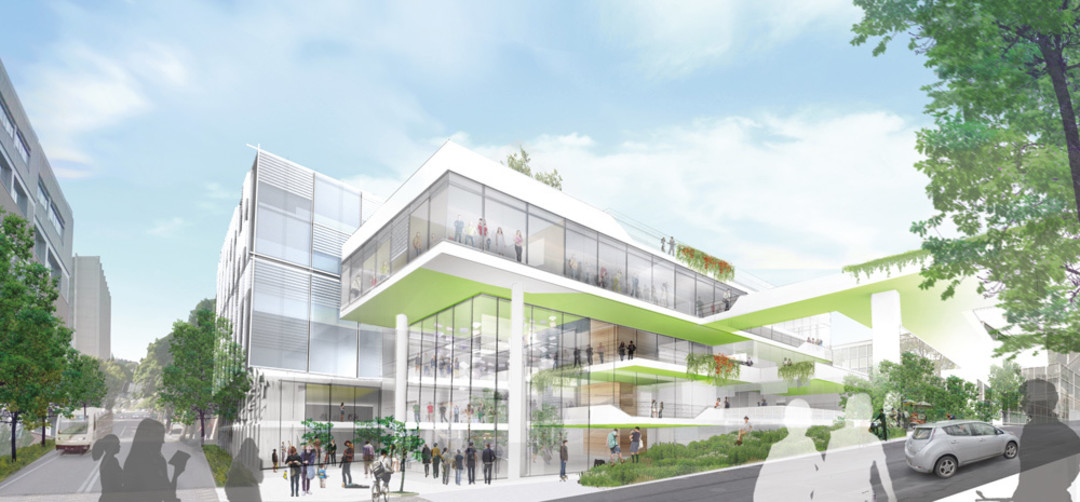Rebooting an Ugly PSU Building with Euro Style

When it comes to architecture, Portland usually buys local. But late last year Portland State University hired Germany’s Stefan Behnisch to design its new School of Business Administration. His brief: expand the school’s current digs—a dreary, brutalist-lite 1970s fort—into a fitting home for the largest business school in the state, next to the region’s busiest transit hub. (Construction begins next July.) A pioneer in the quest for more sustainable buildings, the 57-year-old Stuttgart native is known for his mix of technology, humanism, and pragmatism, in buildings ranging from the Institute for Forestry and Nature Research in the Netherlands to a colorful parking garage in Santa Monica. We spoke with him on a recent visit.
What’s your impression of Portland?
I like the city, but whenever I am here I always hear, “Oh, we don’t need outsiders.” I disagree. In Bavaria, a lot of our buildings are built by international architects. It puts us in a different league.
Is it easier to build good buildings in Europe?
In the US, the people who do the actual work are so far removed from the architect: construction manager, general contractor, subcontractor after subcontractor. In Germany, we, the architects, work on site as the construction managers. Here, I can’t even tell the poor guy working inside that a wall shouldn’t be yellow, it should be red. On a complex building like the one at PSU, we would manage more than 100 contracts. That gives us a direct influence.
You’re working with an ugly building...
An interesting one, yeah? It’s a character. Very dull and confusing. But I like tasks with a certain framework. The context makes it interesting for us. There’s also a pattern of open space, park space, block space, the street—the public realm. That’s interesting.
One historian said Portland always wants first-class passage on a steerage ticket. Will you have enough money for a great building?
You can always use more, but some of my best buildings were very cheap. A great budget is no guarantee for a good building, and a low budget is no guarantee for a bad building. Our architecture is more about color and space than about material. Color and space are usually not very expensive. It would be helpful to have 10 percent more. But generally quality and money are not directly connected.
Do any recent buildings make you jealous?
I can be jealous of great ideas: why didn’t I think of that? What doesn’t make me jealous is that a lot of groundbreaking new buildings have been built in less than democratic situations. Some architects say, “Democracy is not the right environment to do great architecture. You need a Putin, you need a Chinese totalitarian government, to pull it off. Once it goes through the public decision-making channels, it is watered down to nothing.” It’s a seemingly logical argument, but actually it’s nonsense. Our societies achieved democracy and freedom. Part of that bill is that people don’t have to accept whatever someone tells them. That goes for art and architecture. Architects still dream of being the fascist’s only child. We in Germany are a bit wary of that.
